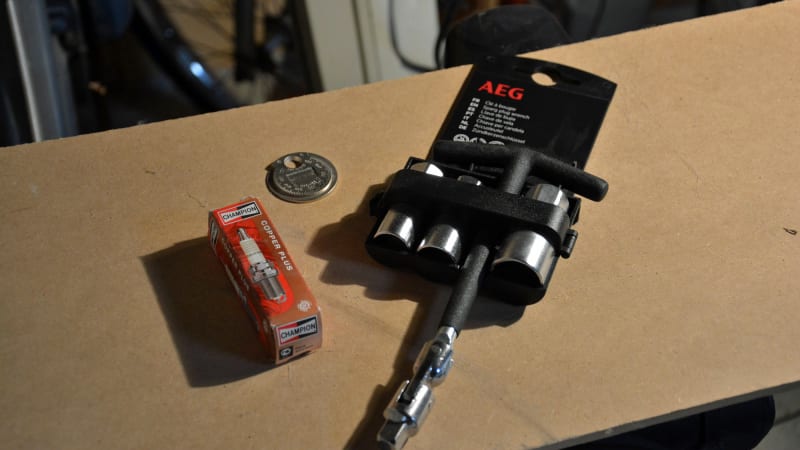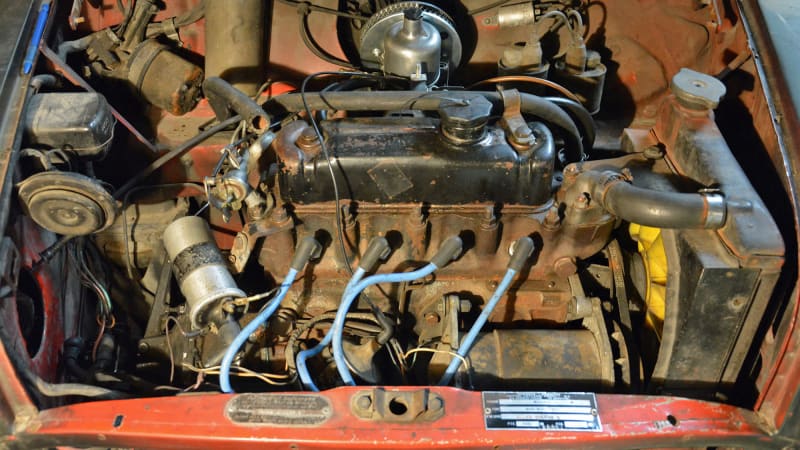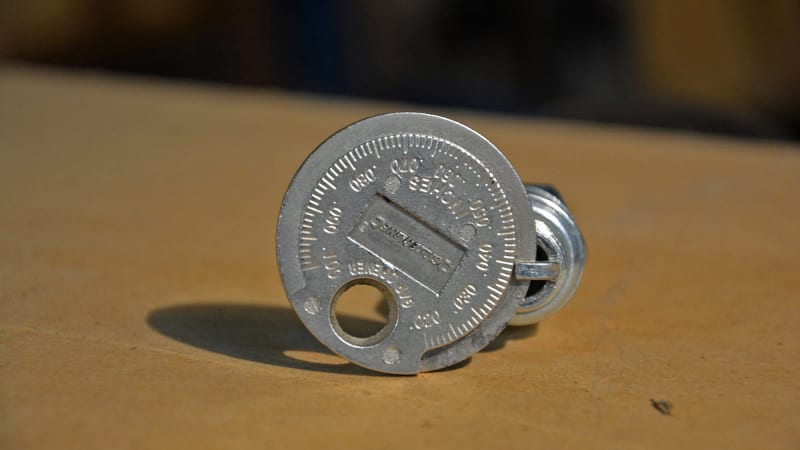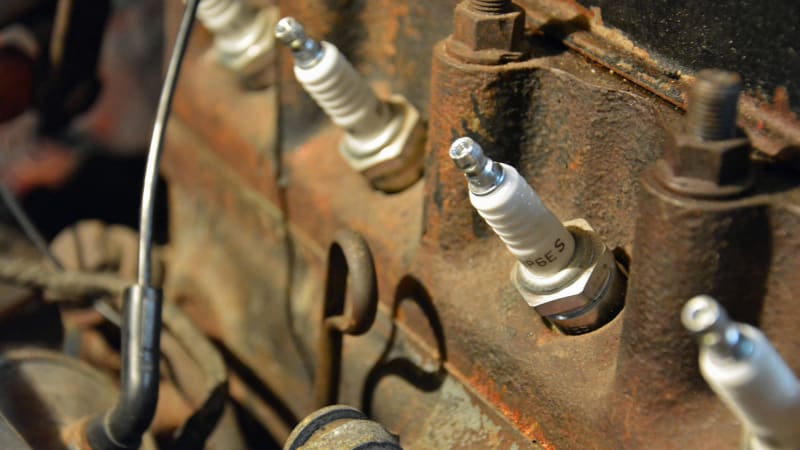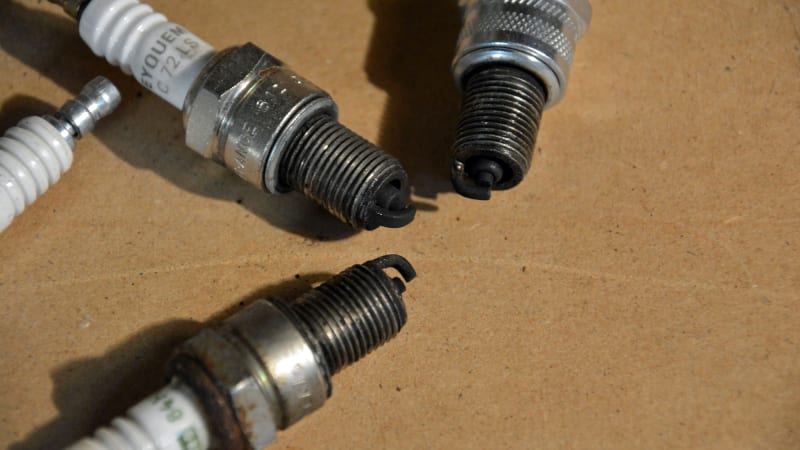Spark plugs are a vital part of a gasoline-powered car’s engine. Without them the engine won’t start, and if they’re in rough shape the engine will run poorly. Nearly all gasoline-powered cars are fitted with spark plugs, regardless of whether you drive a new Porsche 911 or a 1990s Toyota Corolla station wagon. Most engines use one plug per cylinder, so a V6 normally has six, but some cars require two per cylinder.
How often you need to replace the spark plugs depends on a variety of factors like the type of car you drive, how you drive it, and its mileage. Signs of bad spark plugs include an engine that’s hard to start, that misfires, or that idles poorly. While tackling this job yourself might seem daunting, it’s far easier than it sounds: A spark plug is a bolt that shoots electricity. Roll up your sleeves, and let’s get started.
What you need
- New spark plugs
- Spark plug wrench
- Gap tool or feeler gauge
- Wrench (optional)
- Masking tape (optional)
1. Locate the spark plugs
First, you need to find your spark plugs. They’re bolted into the cylinder head, near or at the top of the engine, but they may be hidden under a plastic cover that you have to pop off. On older cars, you can find them by following the wires from the distributor — one comes from the coil but the others go straight to the plugs. On many newer cars that don’t have a distributor, each plug has a coil that needs to be removed.
We’re using a 1972 Mini project car to illustrate this process. In the photo below, the spark plugs are beneath the upper end of each blue wire. This guide isn’t Mini-specific by any means, and it also applies to motorcycles, lawn mowers, and chainsaws, among many others.
2. Remove the old plugs
Removing a spark plug is straightforward because it’s essentially a bolt. Lefty-loosy, righty-tighty. Start by taking off the spark plug wires or the coils. Removing a wire is simple: Gently pull on it, and it will come off. Don’t touch the end that goes to the distributor (unless you need to in order to gain additional clearance), and we suggest labeling each wire using masking tape so that you put them back in the right order. If you’re dealing with coils, they’re likely secured by a bolt whose size varies from model to model. Either way, you should soon see the plugs. Before you take them out, remove any debris that has accumulated in the spark plug well; it could fall into the engine if you don’t.
When the plugs are accessible and the wells are clean, it’s time for the spark plug wrench to come out. There are several types: Some mechanics prefer to use a socket that they can attach to a ratchet, while others like working with a dedicated wrench. What you use doesn’t matter as long as it’s the right size and it reaches the plug. Keep in mind using a regular socket will likely damage the spark plug.
3. Gap the new spark plugs
Some spark plugs come pre-gapped while others don’t need to be gapped. If yours fall into either of those categories you can skip this step, though it’s wise to check that the gap on a pre-gapped unit is correctly set. If you don’t tick either box, you’ll need to use a gap tool (or a feeler gauge) to adjust the space between the ground and the center electrode. It varies from the car to car, though it’s usually between 0.02 and 0.06 inches. “Close enough” doesn’t cut it here, the engine will run poorly or not run at all if the gap isn’t properly set, so check online or in a service manual if needed. Alternatively, the gap is normally clearly written on the box that your new spark plugs came in.
Assume we’re working with a 0.04 gap. If the gauge doesn’t fit between the electrodes, the gap is too tight; gently bend the ground electrode out to widen it. If the gauge fits but doesn’t touch either electrode, the gap is too wide; gently bend the ground electrode in to tighten it.
4. Install the new spark plugs
Install the new spark plugs in the reverse order in which you took them out. Start by tightening them gently (by hand if possible) and use the wrench to secure them about an eighth of a turn past hand-tight. Better yet, use a torque wrench and find the specs in your car’s service manual or by looking online. Never overtighten a spark plug or cross-thread it; you can cause disabling (and stunningly expensive) damage to your engine.
Pop the wires or the coils back on the plugs, start the engine to make sure it runs normally, and you’re good to go.
What do I do with my old spark plugs?
Anything you want: Toss them into the nearest garbage bin, keep them as a souvenir, or weld them into a stick figure. Regardless, always look at the electrodes before you dispose of them, because they can tell you a lot about what shape your engine is in. They will look worn (typically brown or gray), that’s inevitable, but if they’re coated with a dry black substance the engine is likely running too rich — it’s getting too much gasoline. If you see a wet, heavier black substance then there’s a chance that engine oil is entering the combustion chamber (you may see blue smoke coming out of the exhaust as well). If they’re coated with a white substance, the engine is probably running too lean.
